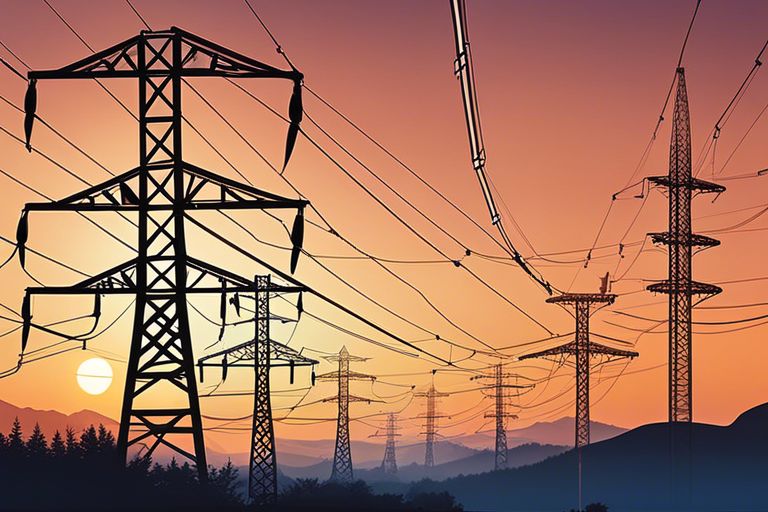There’s a remarkable dance of electrons happening above our heads every day, carried by transmission lines that span great distances to keep our cities powered. These intricate networks of interconnected cables and towers play a crucial role in maintaining the flow of electricity from power plants to homes and businesses. Let’s examine into the fascinating world of transmission lines and uncover the secrets behind their vital role in keeping energy flowing smoothly.
The Basics of Transmission Lines
What are Transmission Lines?
Transmission lines are imperative components of the electrical grid that carry electricity over long distances from power plants to substations and eventually to homes and businesses. These lines are typically made of metal conductors that have low resistance to the flow of electricity, allowing them to transport large amounts of power efficiently.
How Do They Work?
The operation of transmission lines is based on the principles of electromagnetism. When electricity is generated at a power plant, it flows through the transmission lines at high voltages to reduce energy losses during the journey. Transformers along the way help to step up or step down the voltage as needed to maintain a consistent flow of electricity.
Basics: Transmission lines play a critical role in maintaining the reliability of the electrical grid by ensuring that electricity generated in one location can reach consumers in another. By efficiently transporting power over long distances, transmission lines help keep the lights on and the machines running in our modern society.
The Role of Transmission Lines in Electricity Flow
Maintaining Voltage and Current
Lines play a crucial role in maintaining the voltage and current levels necessary for the efficient transmission of electricity. By minimizing resistance and maximizing conductivity, transmission lines help ensure that electricity flows smoothly from power plants to homes and businesses.
Managing Power Distribution
Maintaining the balance of power distribution is another vital function of transmission lines. These lines help regulate the flow of electricity, ensuring that power is delivered where it is needed most. By monitoring and adjusting the distribution of electricity, transmission lines help prevent overloads and blackouts.
Current flow is carefully managed through transmission lines to prevent disruptions in the electricity supply. Through sophisticated monitoring systems and control mechanisms, transmission lines help ensure a steady and reliable flow of electricity to meet the demands of consumers across vast distances.
Overcoming Challenges in Transmission
Dealing with Energy Losses
Even with advanced technology, transmission lines face challenges such as energy losses during the long-distance journey of electricity. As electricity flows through the lines, some energy is converted into heat due to resistance in the conductors, leading to loss along the way.
Mitigating the Impact of Weather Conditions
With transmission lines exposed to the elements, weather conditions like storms and extreme temperatures can pose threats to the flow of electricity. Strategies such as reinforcing structures, using weather-resistant materials, and implementing predictive technologies help mitigate the impact of weather on transmission lines.
Overcoming challenges in transmission requires a combination of advanced engineering solutions, efficient maintenance practices, and innovative technologies. By addressing issues like energy losses and weather-related impacts, the reliability and resilience of transmission lines can be improved, ensuring a steady flow of electricity to meet the demands of modern society.
To wrap up
Presently, we have explored into the intricate world of transmission lines and their crucial role in keeping electricity flowing efficiently across vast distances. Just as veins carry blood throughout our bodies, transmission lines act as the circulatory system of our power grid, ensuring that electricity reaches our homes, businesses, and communities. Understanding the wonders of these power lines helps us appreciate the remarkable technology that powers our modern world.

